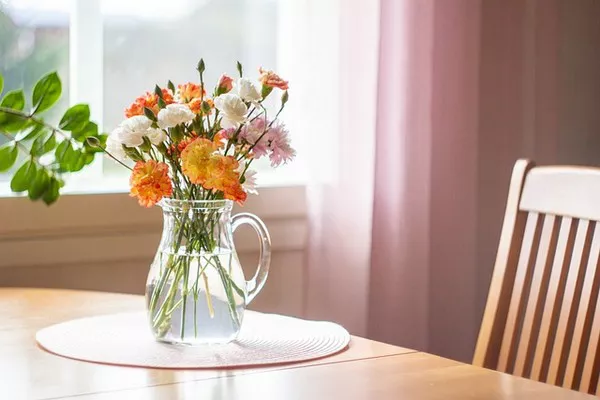Flowers, with their vibrant hues and delicate petals, have long been cherished for their aesthetic beauty. Yet, beyond their visual appeal, flowers carry a language of their own—a symbolism deeply rooted in culture, history, and human emotion. From ancient civilizations to modern societies, flowers have played a significant role in conveying sentiments, expressing emotions, and embodying diverse meanings. In this exploration, we delve into the profound world of floral symbolism, unraveling the messages that flowers convey across different cultures and contexts.
Historical Tapestry of Floral Symbolism
To understand the rich tapestry of floral symbolism, we must journey through the annals of history. Ancient civilizations, such as the Greeks, Romans, Egyptians, and Chinese, revered flowers for their mythological, religious, and medicinal significance. In Greek mythology, for instance, the iris symbolized a connection between heaven and earth, serving as a bridge for the divine messenger Iris. Romans associated the rose with love and beauty, an association that endures to this day.
Moving eastward, the symbolism of flowers takes on distinct hues in Chinese culture. The lotus, with its roots in the mud and blossoms above the water, represents purity rising from adversity. Similarly, the chrysanthemum holds significance in Japanese culture, symbolizing longevity and the sun. As we traverse the historical landscape, it becomes evident that flowers have been interwoven into the very fabric of human existence, conveying messages that transcend time and borders.
Floral Expressions of Love and Romance
One of the most universally recognized aspects of floral symbolism lies in expressions of love and romance. Across cultures, flowers have been employed as messengers of affection, desire, and passion. The red rose, often referred to as the “queen of flowers,” is an enduring symbol of love in Western culture. Its deep red petals convey emotions ranging from profound love to passionate desire.
Conversely, in the East, the cherry blossom holds sway as a symbol of love and beauty in Japanese culture. The fleeting nature of cherry blossoms serves as a poignant reminder of the transient yet exquisite essence of love. In Indian culture, the marigold takes center stage during celebrations of love, representing the vibrant and auspicious nature of marital bonds.
Cultural Variations in Floral Symbolism
As we traverse the globe, it becomes apparent that the symbolism of flowers varies significantly from one culture to another. In Victorian England, for example, a complex language of flowers, known as floriography, emerged. Bouquets were carefully arranged to convey specific sentiments, with each flower carrying its own meaning. The daisy, for instance, represented innocence, while the lily symbolized purity and virtue.
In stark contrast, the symbolism of flowers in the Middle East is deeply rooted in Islamic traditions. The rose, known as the “queen of flowers” in the West, is revered in Islam for its association with Prophet Muhammad. The jasmine, with its fragrant blossoms, holds significance in Middle Eastern cultures, symbolizing purity and grace.
Understanding these cultural variations adds layers of complexity to the intricate language of flowers. What may signify love in one culture could represent mourning or sorrow in another, highlighting the importance of cultural context in interpreting floral symbolism.
The Therapeutic Power of Floral Symbolism
Beyond their role in cultural and historical contexts, flowers have also been harnessed for their therapeutic properties. The practice of using flowers for medicinal purposes, known as herbalism, has ancient roots. The Greeks, for instance, recognized the healing properties of plants, including flowers like lavender and chamomile.
In contemporary times, the field of floral therapy, or flower essence therapy, has gained popularity. Developed by Dr. Edward Bach in the early 20th century, this holistic approach uses the essence of flowers to address emotional and mental well-being. Each flower essence is believed to correspond to specific emotional states, offering a gentle yet potent form of emotional support.
Floral Symbolism in Art and Literature
The language of flowers has also left an indelible mark on the world of art and literature. Throughout history, artists and writers have drawn inspiration from the intricate beauty and symbolic richness of flowers. In the realm of visual arts, the Dutch still-life paintings of the 17th century often featured meticulously arranged bouquets, with each flower carefully chosen for its symbolic meaning.
Literature, too, is replete with references to flowers as powerful symbols. William Shakespeare, the master wordsmith, frequently employed floral imagery to convey complex emotions. In “Hamlet,” Ophelia’s tragic demise is accompanied by her distribution of flowers, each carrying a poignant message about love, loss, and madness.
Modern Interpretations of Floral Symbolism
In the contemporary era, the symbolism of flowers continues to evolve, taking on new meanings and interpretations. The rise of floral arrangements as a form of self-expression has given individuals the opportunity to convey their emotions through carefully curated bouquets. Social media platforms are adorned with images of floral arrangements, each telling a unique story through the language of blooms.
Furthermore, the sustainability movement has prompted a reevaluation of the environmental impact of the floral industry. Conscious consumers are increasingly seeking locally sourced and eco-friendly blooms, emphasizing a desire for ethical and environmentally responsible floral practices.
Conclusion
In conclusion, the language of flowers is a rich and multifaceted tapestry that weaves together history, culture, and human emotion. From ancient civilizations to modern expressions of love and self-care, flowers have played a central role in conveying messages that transcend linguistic barriers. As we continue to explore the profound symbolism of flowers, it becomes clear that their beauty extends beyond the visual realm, touching the very core of human experience. In a world where words may falter, the language of blooms persists as a timeless and universal means of communication.


